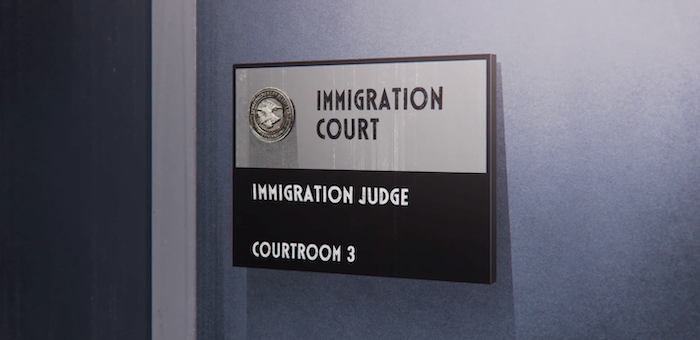Published November, 2020 by Jackie Zammuto in ICE
Case Study: Using Video in an Asylum Hearing
This case study is part of the WITNESS Video as Evidence Guide: Immigration. You can find the full guide here.
VIDEO SCREENED IN ASYLUM HEARING TO CORROBORATE CLIENT’S FEAR OF FUTURE PERSECUTION, NEW YORK IMMIGRATION COURT (2011)
An attorney successfully screened a video in New York immigration court in connection with an asylum claim for her client, who had fled Argentina due to persecution on account of being transgender.
The country conditions in Argentina did not indicate on the surface that any persecution existed for transgender people. The lawyer sought to submit a documentary film to the court that showed police in that country arresting transgender people on the street, as well as showing the physical violence and degrading language used against them.
The immigration judge was willing to find a solution to have the video screen in the courtroom; she advised the attorney to prepare a motion to present video evidence and to include in it a request to make video equipment available to be able to arrange for equipment on which to play the video in the courtroom. The attorney prepared the motion, stating that her client wished to show selected portions of a video (transcripts of which were attached to the motion) in which transgender activists and transgender women from Argentina discussed their experiences. She added that her client requested a standard DVD player be provided for her hearing or that she, the attorney, be allowed to show the video from a laptop. The motion worked, and after some back and forth with the clerk and immigration court’s information technology department, the attorney was able to get a television monitor and DVD player wheeled into the courtroom. She was able to screen the roughly four-minute video of the Argentinian police harassing, arresting, and beating a transgender woman.
The judge also asked the attorney to submit a written transcript of the video clip to be included with her motion to present video evidence. The attorney worked together with a team of interns from her organization to transcribe several 2-3-minute segments of the documentary film from its original Spanish; they then translated the transcript into English. Not only were the spoken dialogue and slurs used by police translated then transcribed, but the transcription included descriptions of the physical interaction that occurred between the police and the transgender women.
The client was ultimately successful in winning her asylum claim. In her decision, the judge referred to the video clip’s written transcription. The attorney acknowledges that transcribing the video was a time-consuming process, however, she believes the video’s content was critical and visceral evidence helping support her client’s fear of future persecution claim. See the motion and supplement to present video evidence (File 5) further below. Read this case study in the Video as Evidence: Immigration Guide.
SAMPLE FILES
Feature Image: Still from We Have Rights by Brooklyn Defender Services and ACLU. Produced by MediaTank and Variant Strategies.

